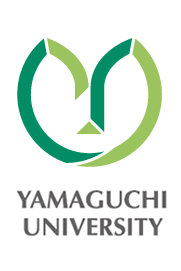FAQ
Q1.What is MOT?
A1. MOT (Management of Technology) is generally translated as technology management, and according to the Ministry of Economy, Trade and Industry, "A Management that able to identify the potential of technology and link it to business to creates economic values for sustainable development of technology-based companies and organizations." In other words, it can be understood as the idea of using technology efficiently to help corporate management.
Q2. What exactly is MOT does?
A2. There are various contents of MOT, and one of them is to manage the innovation creation and link the results of a technology into profits. In other words, from the research results of the company it may lead to new product development can be efficiently executed, strategy that emphasizes intellectual property such as patents, copyrights, brand value, appropriate selection of business fields that can demonstrate the strengths of the company, people and product, optimal combination of own management resources such as information and use of external resources, promotion of new business creation and venture business entrepreneurship, planned and rational execution of various projects centered on new businesses, etc.
Q3. I often hear that MOT is important these days, but what is the reason?
A3. The competitiveness of Japanese industry was regarded as extremely high in the world until the 1980s, but it has declined rapidly since the 1990s. Although the level of technology itself is high, it may be caused by problem with the management method that connects it to corporate profits. Previously, Japan might have been catch-up-type management with the competing with economic growth of Europe and the United States. However, when Japan became a front runner, originality is required and strategic management decisions are required. On the other hand, it can be said that the main reason is that it has become difficult to make such appropriate management decisions in the increasing uncertainties such as rapid technological innovation and changes in market needs.
Q4. When and how did MOT education started?
A4. It is said that MOT education at the university was first started in 1980s at the Massachusetts Institute of Technology's Graduate School of Business Administration (MBA course) in Boston, USA, and has developed in various projects in strengthening industrial competitiveness in the United States. According to the Ministry of Economy, Trade and Industry, it is estimated that more than 160 universities currently have MOT courses in the United States, producing more than 10,000 technology management personnel annually, playing an important role in strengthening industrial competitiveness. In Japan, professional graduate schools for MOT education have started since around 2003.
Q5. Who is the target of MOT education in Japan and how it is conducted?
A5. MOT education mainly targets people who belong to the research and development department and planning department of technology companies who has social experience, and develops the ability to handle both technology and management. Most students are from professional graduate school. Those who participated in MOT education are expected to play an active role as CTO (Chief Technology Officer) or its support force of the company in the future.
Q6. What is a professional graduate school and what kind of education is provided there?
A6. The professional graduate school was newly institutionalized in 2003, and while the graduate school prior to that normally focused on training researchers, professional graduate school aims to train professionals with advanced knowledge. In the field of technology management, in order to cultivate interdisciplinary knowledge and skills that familiar with both technology and management as well as practical skills that can be used in the field of business, course are conducted not only through classroom lectures but also using case study to improve problem-solving and decision-making abilities. In many cases, students can complete the master's program by taking classes on weekday nights and Saturdays so that working adults can pursue their study while working at a company.

